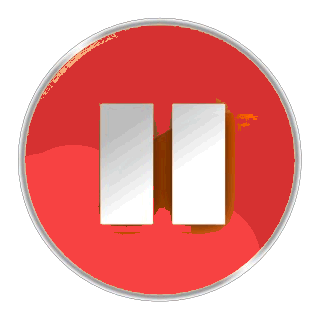
Plays music in any key
The khromophone is a radical departure from many traditonal instruments. It is classified as a "fipple flute" which puts it in the same family as tin whistles and recorders. While capable of playing any type of music that can be played with those intruments, it is designed to be equally playable in any key with equal ease and it excels as a jazz instrument. It is a good instrument for reed players who like the sound of a flute, but aren't ready to learn the flute embouchure or the transverse holding position required to play it. In fact, its design was inspired by a small open hole reed instrument called the Xaphoon, invented by Brian Wittman in 1972. It does not have the pair of double holes a recorder depends on for chromatic playing. All of its holes are single holes, and there are only two simple cross fingerings needed to play all 12 tones of the chromatic scale. No awkward hand positions are involved for any of the notes. The holes are postioned to conform as closely as posible to that of the human hand. The G fingering chart reveals the simplicity of its chromatically tuned hole arrangement. As a reed player for most of my life, I've found it quite easy to get the hang of, and it has become one of my favorite instrument. I believe and am hopeful that musicians who get their hands on one will be pleasantly surprised and find it as much a joy to play as I have.
two octave range
The khromophone has a range of 2 octaves, from G4 to G6. Like other flutes and whistles, it has multiple registers or overtones. The low one is a full octave, going from G4 to F#5. The second one continues where the first leaves off, going from G5 through D6. The third register plays D6 through F#6. The G6 is in the 4th and highest register. A few notes higher than the G6 are possible, but not very usefull due to the amount of breath pressure they require, and the fact that their pitches are not accurate.
pleasing tone


The khromophone's tone is flutelike, somewhat like a Native American flute. Because the mouthpieces are hand formed, there can be some variation in tone from instrument to instrument, but only mouthpieces that meet a standard of tonal purity and good volume are used.. More sound samples, as well as video demos are on the "Lessons" and on the "Pictures" sections here.
acurate pitch
Khromophones are accurately tuned at 75° F.(24° C.), and the notes will sound good from 70° to 80° F. They go slightly sharp if the temperature is much higher, or slightly flat if it is colder. This is true of all wind instruments because the speed of sound varies with temperature. The only way to compensate for this is to change the length of the instrument. Manual tuning adjustments are sometimes possible by pulling the mouthpiece &/or whistle body partly out of the collar to lower the pitch, but if you expect that most of your playing will be in a very cold or very hot environment, custom tuned khromophones are available to suit your needs. Just use our contact page if you need to place a special order.
ergonomic design
The hole placement is intended to conform to the natural position of the hands when holding the khromophone. If the holes were all in a straight line, it would be difficult to cover all of the holes comfortably, and would make playing it more difficult and less satisfying. When an instrument has only 6 holes, a straight configuration is not really a problem, but with the additional three holes on the khromophone, care needs to be taken so they will all be within easy reach of the fingers. Indentation of the holes serves to make sealing the holes with the pads of the fingers more effective, more comfortable, and make it easier to feel the hole's locations. There is also an indentation for the right thumb on the bottom. This hole arrangement is similar to that of the xaphoon.
Excellent Teaching instrument
The khromophone is very useful for teaching musical concepts for several reasons . It is easy to play since there is no special embouchure to be learned and mastered., The only physical skills required are breath control and finger coordination. Tthe holes are arranged in a very logical and easy to understand system so students wshould not have much difficulty learning where all the notes are, There are only two cross fingerings that need to be learned. All of the notes of the chromatic scale are availble and easily played so the concept of playing music in all different keys can be demonstrated to students. When the major scale is learned, students will be able to grasp the concept of whole tones and half tones without any trouble. Whole tones skip a hole, and half tones do not. .
affordable
Khromophones run from $25 to $95, depending on model and style Shipping within the US is free. International orders are charged shipping at this time, unfortunately. For more details on pricing, visit the khromophone store. Thanks! --Ken